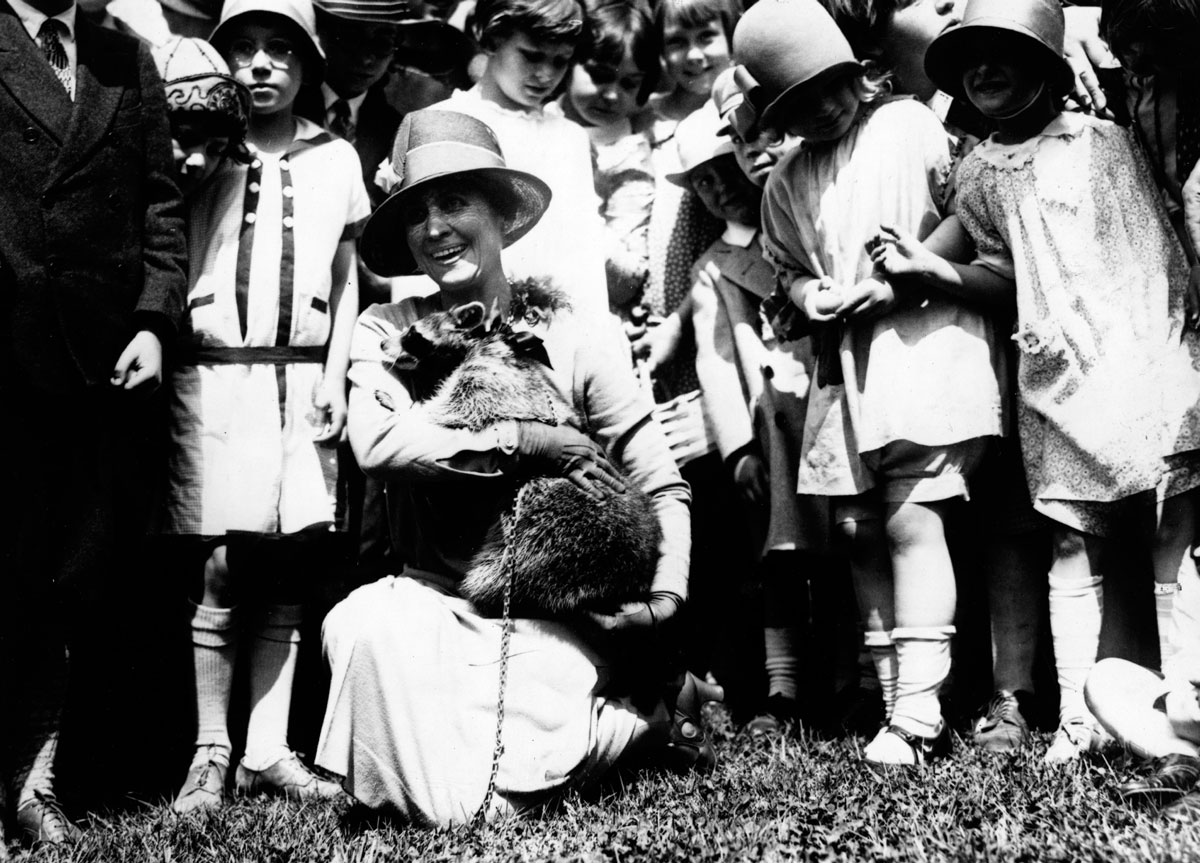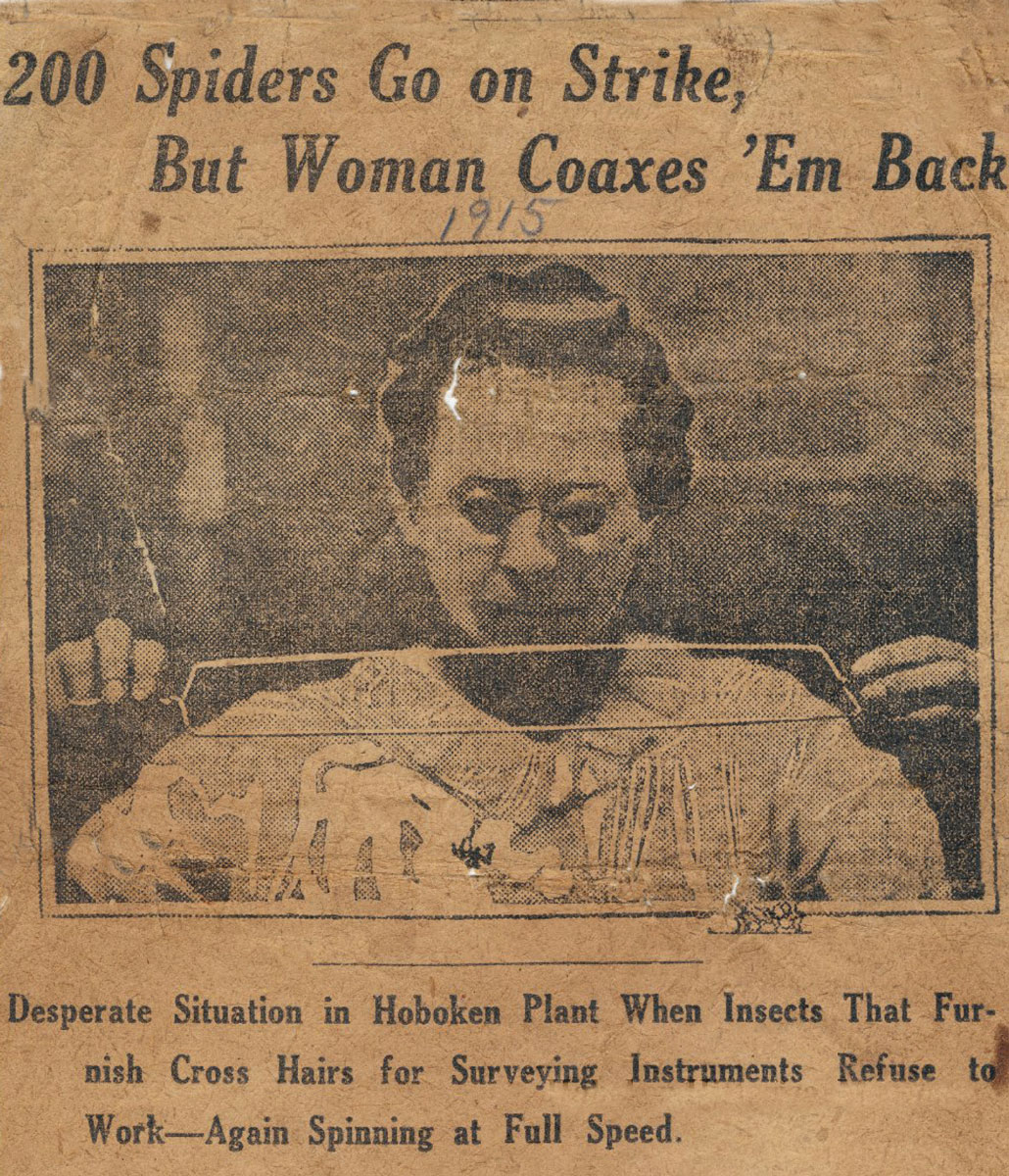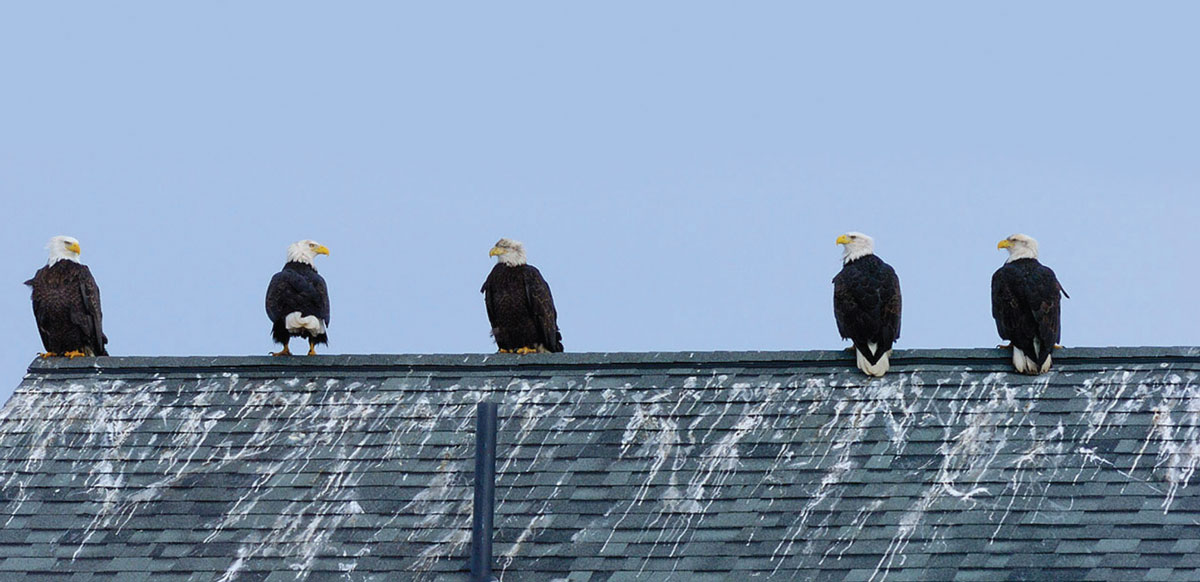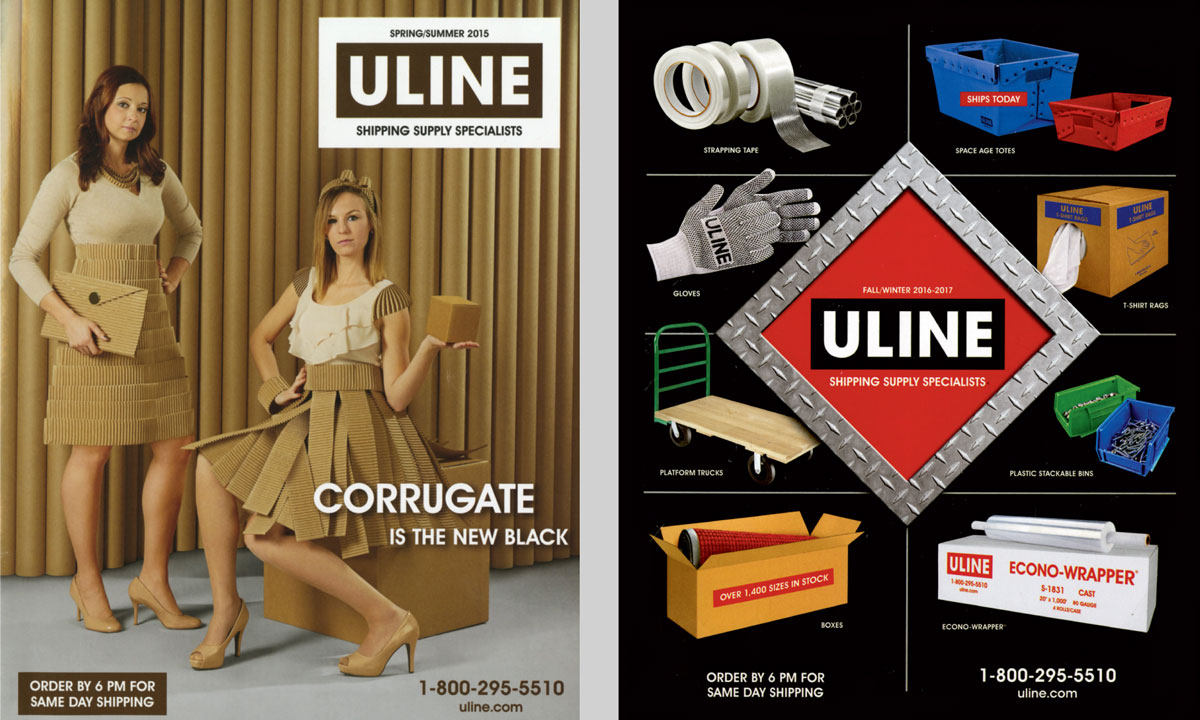Kiosk / Fall 2016–Winter 2017
In the nooks and crannies
Cabinet

Researching the history of the cow that William Henry Taft kept at the White House, we discovered the long and varied history of presidential pets. While cats and dogs dominate the list, there were also some surprises. John Quincy Adams had an alligator, which lived in a bathroom; perhaps predictably, Andrew Jackson’s parrot knew how to swear. Benjamin Harrison had a pair of opossums, Woodrow Wilson a ram named Old Ike who was partial to tobacco, Calvin Coolidge a raccoon, and Herbert Hoover not one but two alligators.
• • •

Speaking of interspecies relationships, it turns out that the collection of spider silk for use in the production of gunsights for the military and other optical instruments—see D. Graham Burnett’s “Spiders, Stars, and Death” in this issue—was a relatively widespread industry (and one that seems to have often been overseen by women). Mary Pfieffer, as Burnett notes, was engaged in gathering spider silk for more than half a century for the instrument maker Keuffel & Esser, based in Hoboken, New Jersey. A short piece in a 1941 issue of the New Yorker described her process of gathering her eight-legged workers—once every summer she would enlist a group of boys in the area to scour the marshes for the critters, for each of which she paid fifteen cents. After amassing a few hundred spiders, Pfeiffer began coaxing their silk by enticing them onto sticks from which she would then carefully fling them into the air using tweezers; the spiders would instinctively begin emitting silk (up to ten feet per toss), which she then duly collected and wound onto spools, though this would typically work only twice with each animal, after which point, the magazine’s correspondent noted, “they seem to get wise to the stunt.” Nan Songer—an image of whom appears in Burnett’s article— was another similarly celebrated “spider lady,” as the press liked to call them. She began her business just as Pfeiffer’s career was winding down. Operating her spider ranch in Yucaipa, California, beginning in 1939, she installed her workforce, collected both by her and by others who sent her specimens from around the country, in a front room of her farmhouse. (Her preferred species included the banded garden spider and the black widow.) Songer’s silk production technique was so sophisticated that, with the encouragement of the US Bureau of Standards, she began offering web to precise specifications, from “extra-heavy” (1/5,000th of an inch) to “extra-fine” (1/50,000th of an inch). For the most sensitive applications, she marketed the silk of week-old baby spiders, which at 1/500,000th of an inch was virtually invisible. Meanwhile, according to a Life magazine article from August 1943, the US Army Quartermaster Corps’ spiderweb production shop in Columbus, Ohio, was directed by Armada Ruffner, whose job it was to entice between 100 and 180 feet of silk every week from each of the dozens of black widow spiders under her supervision.
• • •
From silk to milk! In his essay on the role of milk in Alfred Hitchcock’s Suspicion, Jeff Dolven tells us of an alternative ending that Hitchcock preferred, but which the studio rejected. In fact, it was not uncommon for Hitchcock to have several endings still under consideration for any given film even as he was shooting it. For example, the filmmaker toyed with a different ending for The Birds. In this scenario, wisely rejected by Hitchcock himself, the group fleeing the birds of Bodega Bay would have driven toward San Francisco, only to see the Golden Gate Bridge entirely covered with birds. As we have written before, the alleyway where Cabinet is situated is also overrun by birds—pigeons, in our case. Perhaps one day we can manage a low-budget version of The Birds, where the editors flee the Cabinet alleyway by car and drive to some distant, pristine, safe place far, far away—say, Homer, Alaska. But when they arrive there, they see—as is in fact the case—that the town has been completely taken over by bald eagles, who dumpster dive, attack citizens walking around with food, and generally act in ways that we associate with less noble birds, such as pigeons. No political allegory here…
• • •

But enough of animals, or even of majestic animals behaving unmajestically. Let’s talk about real majesty—Queen Victoria. A question we ran into when editing Annie Julia Wyman’s article on Mountbatten Pink: Was the Indian city of Jaipur painted pink in order to impress Queen Victoria, Empress of India, on her visit there in 1876? Having spent some time with numerous sources that assert this, we then came across a simple, inconvenient glitch: Queen Victoria never visited India! A couple of other sources had claimed that the town was painted in the color in honor of Prince Albert. But here a more serious glitch came into play: Albert, Victoria’s consort, had long been dead by 1876. Still other sources claimed that this was all done in honor of the Prince of Wales, Queen Victoria’s son. Now, this personage did in fact visit India that year, but we soon discovered an even more fatal glitch: Jaipur’s walls had been painted with a pink wash long before 1876. We keep hearing this new phrase “alternative facts,” as if certain political agendas have a monopoly on misinformation. If only that were the case.
• • •

Very few dignitaries visit our office these days; let’s blame the pigeons and pretend it has nothing to do with us. But recently an intrepid representative from Uline, our shipping supplies provider, came to our offices to … well, we’re not sure why. We already buy what we need from them and this visit was a symbolic remnant of an older, vanishing economy of traveling salesmen doling out free promotional merchandise and generally pressing the flesh. We did end up with a couple of nifty Uline pens, and finally, having run out of things to say to him, we decided to inquire as to why the company had stopped its short-lived experiment with surreal catalogue cover imagery. (See Cabinet no. 60.) The representative stumbled and feigned ignorance. We showed him some examples of these extraordinary covers and his improbable response was that their current covers were equally “exciting.” You can judge for yourself how the current cover stacks up against one of the masterpieces we had in mind. At any rate, we’d obviously struck a nerve; he packed up his bag quickly and fled down the alleyway, chased by pigeons.
Spotted an error? Email us at corrections at cabinetmagazine dot org.
If you’ve enjoyed the free articles that we offer on our site, please consider subscribing to our nonprofit magazine. You get twelve online issues and unlimited access to all our archives.